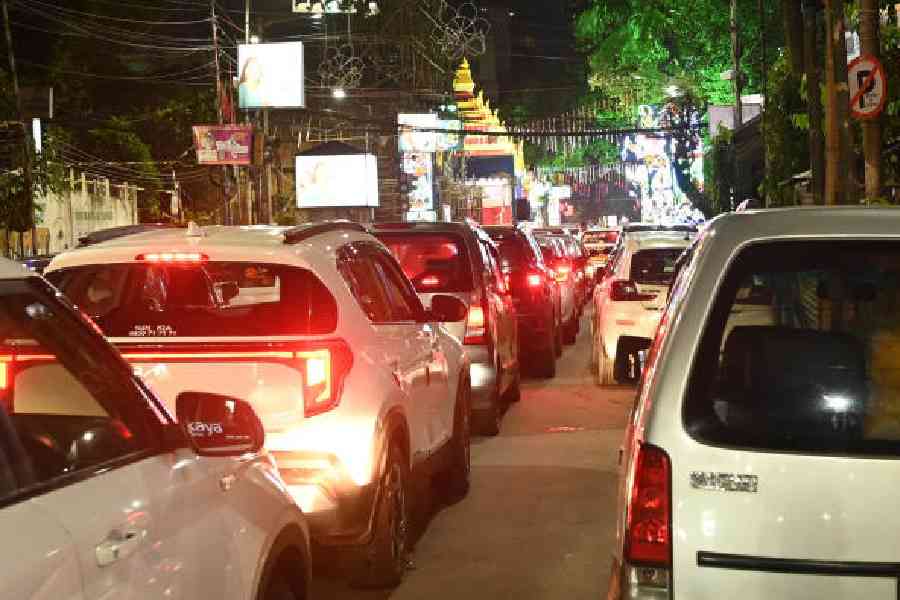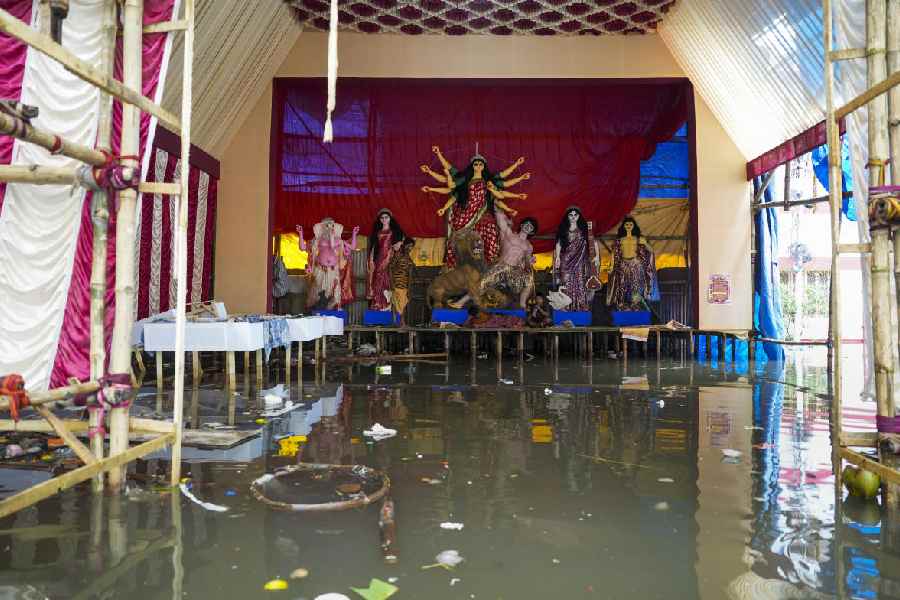 |
Mamata’s hidden hand in Cannes
The 66th Cannes film festival, at which India was the “guest country”, ends today. Perhaps Mamata Banerjee deserves a word of praise for ensuring that during the celebrations to mark 100 years of Indian cinema, Bengal wasn’t entirely forgotten.
Now is the time to start planning for 2014 because behind the glamour and glitz, serious business is done in Cannes.
Judging by the quality of filmmaking evident in Alik Sukh (Fleeting Happiness), directed by the understated but talented duo of Shiboprosad Mukherjee and Nandita Roy, it shouldn’t be too difficult to sell Bengali films to a world audience.
Alik Sukh was pretty good with some excellent performances. It was also encouraging to see an actor of the stature of Nawazuddin Siddiqui quietly slip in and stay to watch the whole film.
Based on a novel by Suchitra Bhattacharya, the story is of a doctor (Debshankar Halder) who is out negotiating the purchase of a luxury apartment for himself and his wife (Rituparna Sengupta) and cannot rush back to deal with an emergency because of a traffic jam. When his woman patient dies after developing complications following a Caesarian delivery, her more militant family members hold the doctor responsible and smash up the nursing home.
It does not help the doctor that even his wife believes he is guilty of negligence. Her tussle with her conscience is depicted through her conversations with the dead woman (Sohini Sengupta) whom she has seen lying abandoned on an operating table. The doctor hires a defence lawyer (Soumitra Chatterjee) but is persuaded by pragmatic but amoral medical colleagues to settle out of court.
Rituparna worked hard in Cannes to promote the film, which had enough of a budget to book a market screening. Perhaps next year there should be half a dozen Bengali movies at Cannes backed by its stars and a reasonable promotional budget.
A further suggestion: the time has come to make Bengali films in English.
 |
Extreme sex
Self-appointed guardians of Indian culture, who smashed up a cinema to express disapproval of the demure love scenes between Shabana Azmi and Nandita Das in Deepa Mehta’s Fire, would probably suffer hearts attacks if they were confronted by the sexiest film in Cannes — Blue is the Warmest Colour (La Vie d’Adèle Chapitre 1 et 2), directed by Abdellatif Kechiche, a Frenchman of Tunisian origin.
If this film was showing at Mini Jaya in north London, let’s say, there would be an appreciative crowd outside.
The plot is as follows: at 17, Adèle (played by Adèle Exarchopoulos) doesn’t question life: “A girl goes out with boys. Her life is turned upside down the night she meets Emma (Léa Seydoux), a slightly older woman with blue hair, who will allow her to discover desire, to assert herself as a woman and as an adult. Adèle grows, seeks herself, loses herself, finds herself...”
“It’s pornographic,” enthused a veteran Indian journalist.
Which is another way of saying the French consider the film to be art of the highest order. Perhaps some bold programmer will be brave enough to include it in a festival in India.
Three young women sitting behind me got so overexcited that I was finally forced to change seats. I am glad I stayed the course of the 2hr 57min movie for I can now appreciate the debate about whether Blue is the Warmest Colour merits the Palme d’Or, the top prize.
The film “happens to contain the lengthiest, most intimate and most graphic lesbian sex scenes in mainstream cinema history,” noted The Guardian. “Praised for its tenderness and intensity, it has been hailed as a landmark in cinematic depictions of lesbian love and female sexuality.”
The film was screened less than a week after gay marriage was legalised in France.
Commenting on the body of work by the director, Abdellatif Kechiche, an American critic, said that “his brilliantly acted, intensely erotic new film is his greatest achievement”.
“Blue is the Warmest Colour features long, graphic sex scenes that are crucial in establishing the all-consuming physical passion that is the foundation of the bond between Adèle and Emma (what US distributors will do with all the full-frontal flesh, saliva, spanking and panting is anybody’s guess),” the critic wrote. “The movie adds up to much more than a lesbian love story; by the time it reaches its quietly devastating, though hopeful, final shot, Kechiche’s film has become a map of the human soul.”
Maybe the Mini Jaya audience is mature enough to take it.
 |
| Red carpet dreams: Prosenjit in Cannes |
Golden recall
Going through its records, The Hollywood Reporter has been publishing evocative photographs from the past — for example, Steven Spielberg (the jury president this year) in 1982, Sean Connery in 1965 and Robert Redford in 1972.
Fifty years from now, Prosenjit Chatterjee, reclining by the railings in front of the red carpet, will also probably recall a golden age.
Cancer fight
Surina Narula, accompanied by her husband, Harpinder, and sons Herman and Manhad, had a market screening of a film on fighting cancer, Decoding Annie Parker, that her family has financed through their Ozymandias Productions. This uplifting film has the support of Manisha Koirala and Angelina Jolie.
 |
| Poster fare: Vikramjit Roy in the India Pavilion |
Indian takes
One wall of the Indian Pavilion, which has been managed by Vikramjit Roy, of the NFDC (general manager, film production), features Hindi movie posters representing 100 years of Indian cinema.
As Vikramjit says, the pavilion encourages “corporate networking”, panel discussions and provides “a platform for Indian delegates”.
Apart from meeting the Anurag Kashyaps of the world, here one can come across Indians engaged in a wide variety of fascinating projects, big and small. I put to one side people like Dibakar Banerjee, a Bombay Talkies director.
Calcutta boy Chayan Sarkar, settled in Brisbane, has made a film, The Sleeping Warrior, on the appalling Australian treatment of its Aboriginal population.
Modhurima Sinha, whose day job is heading Taj Hotels PR in Calcutta, is finishing a book on the Cartier jewellery dynasty.
In the Short Film Corner, Durba Sahay (ée Bannerjee) and Sreemoyee Bhattacharya have entries with The Mechanic and Shadows, respectively.
How six Satyajit Ray films (Charulata, Mahanagar, Nayak, Kapurush, Mahapurush, Joy Baba Felunath) have been restored was explained to me by Varsha Bansal, granddaughter of R.D. Bansal, producer of Charulata.
One hopes there will be an even bigger Bengal contingent in Cannes 2014. The CII team this year included its deputy-director general Amita Sarkar and her director colleague, Atreyee Talapatra (who cleverly matched her pretty aquamarine sari with the colour of the sea).
The Calcutta Kathak maestro, Pandit Chitresh Das, is the subject of a film by San Francisco-based Antara Bhardwaj (who is married to a Bengali, Kingshuk Brahma). Walking down Rue d’Antibes, Antara was kind enough to sing one of my favourite songs — Yeh samaa, samaa hain yeh pyar ka from Jab Jab Phool Khile.
Tittle tattle
India’s contribution to sex in cinema is to be Kama Sutra 3D, directed by Ropes Paul and starring Sheryl Chopra, whose accomplishments include posing for Playboy. Full page ads in Screen International said that, “celebrating 100 years of Indian cinema”; this “epic of all epics” was “the most awaited movie of the year”.










